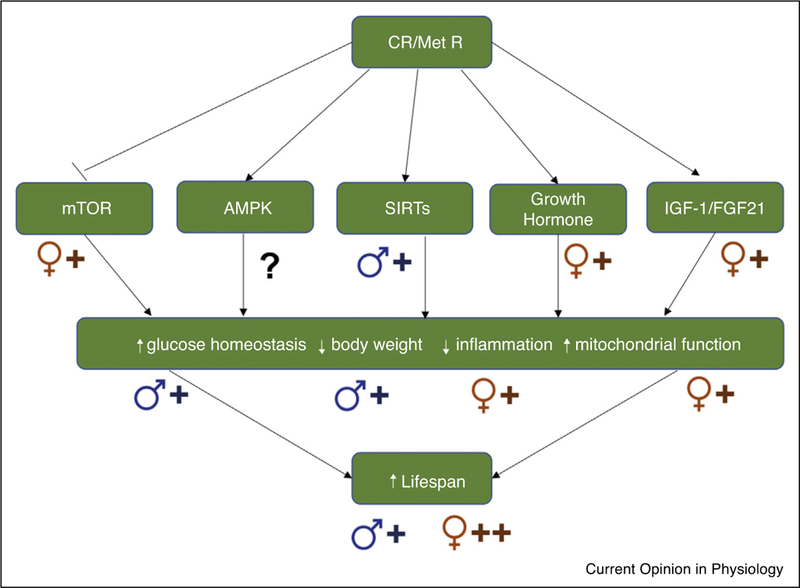Figure 1.

Possible sex effects on aspects of the CR/Met R mechanistic pathways. CR and MetR exert their beneficial health and lifespan effects, at least in part, by modulating the nutrient sensing and aging pathways of mammalian target of rapamycin (mTOR), AMP-activated protein kinase (AMPK), sirtuins (SIRTs) and insulin-like growth factor 1 (IGF-1) or fibroblast growth factor 21 (FGF21). Activation (AMPK, SIRT, IGF-1) or inhibition (mTOR) of these pathways results in potential health benefits including increased glucose homeostasis, decreased body weight, decreased inflammation and increased mitochondrial function. There are possible differential modulations of these aging pathways and their associated health responses in males and females. Studies suggest that overall females may have a greater response to CR, with females having an increased response to mTOR inhibition or IGF-1/FGF21 activation, and greater inflammatory and mitochondrial health responses. Studies suggest that males may have an increased response to SIRT activation, and a greater decrease in bodyweight and increase in glucose homeostasis in response to CR. More studies are needed to clarify these potential sex differences. The male (♂) or female (♀) symbols indicate if there is a reported sexual dimorphism in response to the pathway or outcome, with the plus symbols (+) indicating the degree of the effect. The combination of the male (♂) or female (♀) symbol with the plus (+) symbols indicates the degree of the sex effect on the pathway or outcome, with ++ indicating a larger effect than +.
